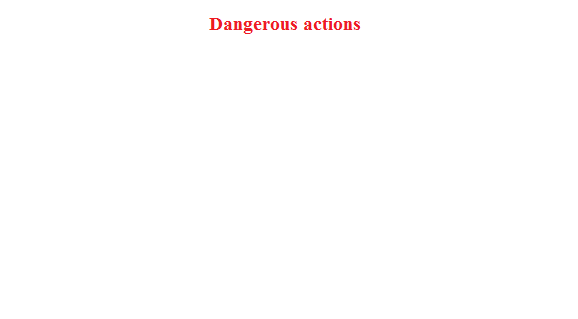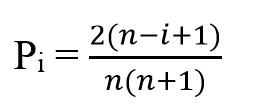Personnel risks as a factor affecting the stability of the production
Attention! While working on the essay the master`s dissertation is still being written. Expectable date of completing the dissertation is July, 2018. The complete text of the dissertation and materials on the research topic can be received from the author or his scientific adviser after the specified date.
Content
- Introduction
- 1. Theme urgency
- 2. The purpose and objectives of the study, expected results
- 3. Personnel risks as a factor of influencing the stability of an enterprise
- Conclusion
- References
Introduction
Within the limits of economic reform, companies are seeking to develop, increase profits, enter new segment markets. The modern economic system is complex and multilevel, and the staff is its important and vulnerable component. The activity and efficiency of the personnel work are paid key attention with emphasis on improving the level of working with personnel. The activities of the staff require a scientific methodological approach, improving work with personnel, interacting with foreign colleagues and borrowing their best practices in the field of personnel management.
Personnel risk is associated with the probability of realizing possible threats from personnel, i.e. this is the risk of losses which can be associated with insufficient qualifications, possible employee errors, non-permanent staff and, as a result, the organization's image suffers. The personnel is considered as an important and scarce resource, investment, which is a condition for the development and successful operation of the enterprise. Considering staff risks as a probability of causing material or moral damage reveals understanding the danger posed from inside the company and desire of company management to prevent negative consequences [2].
1. Theme urgency
Personnel management is an obligatory procedure in the quality management system of an enterprise that meets the requirements of the international standard ISO 9001:2015 based on identifying risk situations of each life cycle stage of products/ services. The personnel selection сan be considered in terms of variability process.
The urgency of the work is in the absence of scientifically based methods for identifying personnel risk factors, assessing its level and taking into account the organizations' economic activities.
2. The purpose and objectives of the study, expected results
The purpose of the study is to detect the most significant and negatively affecting personnel risks at the enterprises of the Donetsk region.
The main objectives of the study are:
- Involving a sufficient number of experts to solve the research objective.
- Identifying and developing personnel risk groups.
- Obtaining statistical data by conducting a survey of members of work collective by completing a questionnaire.
- Processing received information using a statistical method.
- Drawing conclusions and recommendations.
Planned results:
– getting traceable and statistically based data that can be used to minimize the risk of human situations;
– developing proposals for their elimination.
3. Personnel risks as a factor influencing the stability of an enterprise
The international standard ISO 9001:2015 Quality management systems. Requirements
considers the problems of information provision, quality management system and risk control. This standard allows to implement and certify quality management system (QMS).
ISO standards series 9000 and TQM are built on seven basic principles of quality management. The third principle is Employee involvement
. The staff is considered as the main resource of an organization which has to create all conditions for maximum use of its creative potential.
The Management Personnel
criterion of the model QMS is both quantitative and qualitative indicator of human resource management.
Personnel risks include:
– educational risks, i.e. causing direct material damage to the enterprise due to the dismissal of an employee getting education at the at the at the enterprise’s expense;
– the risk of stealing material resources from the enterprise connected with deformed social attitudes of the individual, the lack of proper control and material resources accounting, legal irregularities on the part of both employees and employers;
– risks of loss, distortion, information theft by employees in the process of its receiving, processing, storing and transferring.
Managing staff risks is connected with understanding the personnel behavior as to what events related to the personnel behavior may pose a risk of economical loss and how they can be avoided.

Figure 1 – Classification of personnel risk
(animation: 14 frames, cycles of repeating – infinitely, 29 kilobytes)
To determine the assessment of the personnel risk of the enterprise an expert method is proposed the merit of which are: the absence of the need for accurate source data and expensive software, as well as the simplicity of calculations. The main shortcomings include the difficulty of involving independent experts and the subjectivity of evaluations.
To identify the significance and assessment of personnel risk the following analysis tools are needed:
- A card of personnel risks built on the basis of expert scales. The advantage of the risk map is that it allows to quickly and accurately, depending on experts, rank risks and identify weaknesses;
- A sheet-questionnaire;
- Invitation of members of the work collective as experts understanding the specifics of the enterprise economic activity and suggest using a pairwise comparison of the significance of risk influence to make a ranking list;
- Use of the statistical method to process a priori information.
Determination of significant factors using the Fishburn scale:

Figure 2 – The formula for determining the significance coefficients
where Рі is weight of i-type personnel risk;The estimated coefficient of significance is calculated as the weighted arithmetic mean determined by experts.
n is the number of types of personnel risk.
An assessment of consistency of experts’ opinions is determined by means of calculating magnitude of coefficient of the concordance proposed by Kendall:

Figure 3 – The formula determining the coefficient of concordance
where S is the sum of the squared deviations of all rank estimates of each type of personnel risk from the average mean;
m is the number of experts;
n is number of types of personnel risk.
Verification of the significance of the concordance coefficient using the criterion Х2:
Figure 4 – The formula for determining the criterion Х2
where m is the number of experts;
n is number of types of personnel risk.
It is necessary to determine the frequency of occurrence of personnel risk for a particular type of risk types under current conditions of the enterprise.
The paper gives an example of a rapid test of a company's stability against personnel risks. Figure 5 shows a possible risk situations in the enterprise and their statistical processing.

Figure 5 – Express test of the state of a company's sustainability to personnel risks
The coefficient of concordance W = 0,76 indicates the consistency of the experts’ opinions. If the experts’ assessment is inconsistent, one of the following options should be selected:
1. To exclude the expert with the most different opinion from the others;
2. To identify the type of personnel risk causing a contradiction.
Conclusion
Due to calculating the significance coefficient of personnel risks types, the most significant ones have been revealed in terms of the impact power. They are presented in the following decreasing order: production errors, loss of qualified personnel, illness/ injury, accidents. The personnel risk indicator is equal to 66 and it indicates that the organization faces a threat from the personnel risk of average level, which cannot be neglected, as this entails significant social and economic consequences.
Minimization of production errors can be done by total control of the employees’ work by leading expert managers with proper professional experience. The loss of highly-qualified personnel can be leveled by providing a full package of social services and maintaining healthy interpersonal relations between the members of the staff. Accidents, illnesses and injuries arising during work must be eliminated with the utmost observance of safety measures in the workplace, and it is also necessary to check equipment of different levels of danger regularly.
References
- Мирошниченко Е.В., Козлова П.И. Кадровые риски как фактор, влияющий на стабильность предприятия//
Современное состояние, проблемы и перспективы развития отраслевой науки — 2018
. Материалы всероссийской научной конференции с международным участием. — Москва, Московский государственный университет путей сообщения Императора Николая II. - Буланова Е.Н. «Социально–экономическое содержание и измерение кадрового риска в хозяйственной организации». Автореферат на соискание ученой степени кандидата экономических наук// Санкт–Петербург, 2008 г. — 24 с.
- Азгальдов Г.Г., Азгальдова Л.А. Количественная оценка качества (Квалиметрия). Библиография. — М.: Изд–во стандартов, 1971. — 176c.
- Квалиметрическая экспертиза. Руководство по организации экспертизы и выполнению квалиметрических расчетов. Книга третья. Расчётные модели качества. / Под ред. В.М. Маругина и Г.Г. Азгальдова. — СПб., М.: Русский Регистр, 2002.
- Гличев А.В. Качество, эффективность, нравственность: Учебное пособие. — М: Премиум Инжиниринг, 2009. — 358 с.
